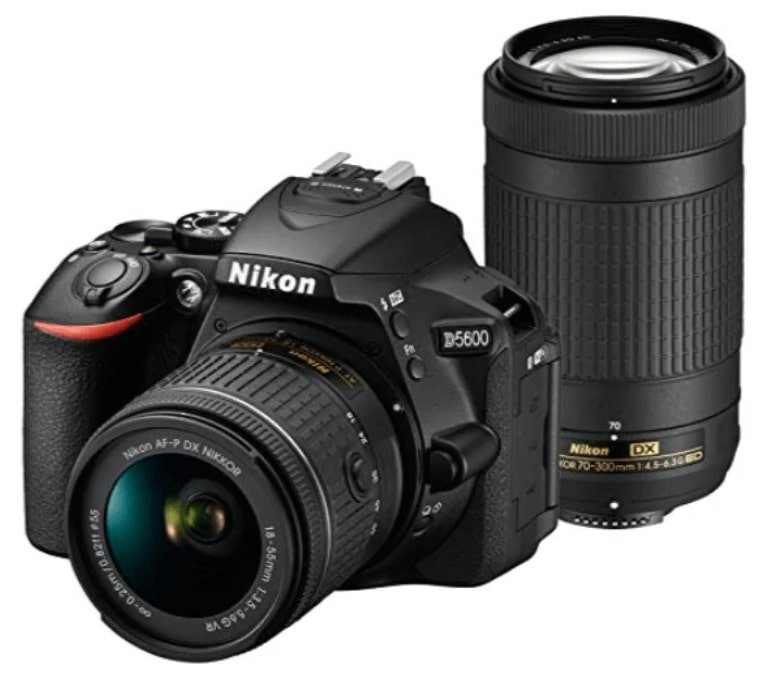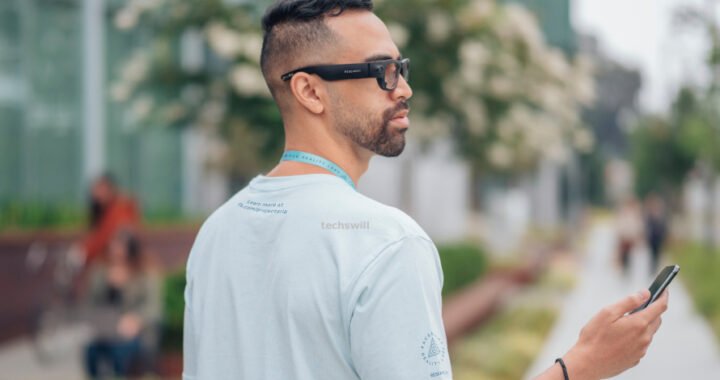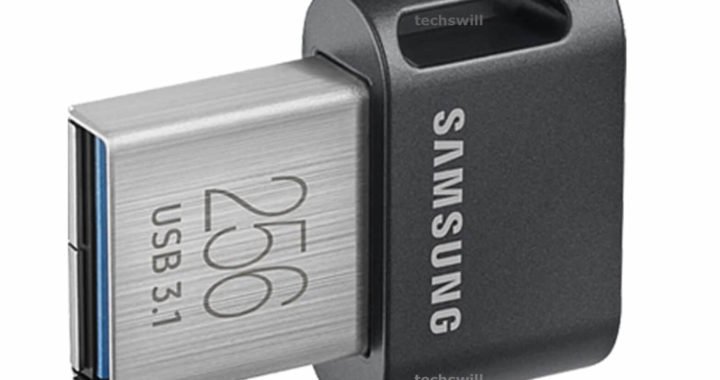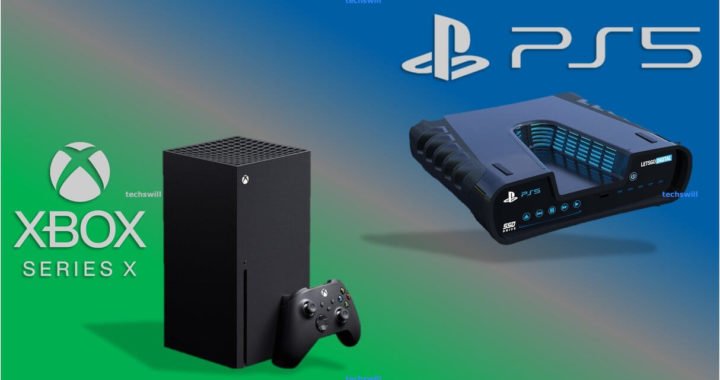Top 10 DSLRs/cameras in 2020

Here are the best cameras for the money, including our favorite DSLRs, mirrorless cameras, point-and-shoot cameras and more.
The best camera is the one you have with you. But how do you choose the best camera? It all depends upon your needs, experience, and budget. If you want speed, portability and lightning-fast focus, a mirrorless camera is the way to go. If you’re looking for awesome detail, better low-light photos and a super-wide range of lenses, a DSLR is your best choice.
Looking for something that you can stuff in your pocket and take on a vacation? Consider a compact point-and-shoot. Or maybe you just want a fun instant camera that can print out pictures you can share, mere seconds after you snap the shutter.
Cameras can be used for more than just taking photos, too. Because so many people are now working from home, many of the best webcams are sold out, as individuals set up home offices. However, in many cases, you can use your camera as a webcam by plugging it into your PC via USB, and then using software such as SparkoCam to allow video chat apps, such as Zoom, to access your camera.
Canon released a beta utility that allows you to use select Canon DSLRs, mirrorless cameras, and PowerShot cameras as a webcam; compatible cameras include the EOS Rebel SL2, SL3, T6, T7, EOS 80D, EOS 90D, the PowerShot GX5 II, GX7 III, and SX70HS. The Canon EOS Webcam Utility Beta is unfortunately a Windows 10-only program at the moment.
We’ve tested dozens of digital cameras across all these categories, and narrowed them down to this list of the best cameras. We evaluated them for picture and video quality, handling, features, and value. We’ve limited our recommendations to cameras that cost $1,500 or less, as we think these picks will appeal to the broadest range of consumers.
What are the best cameras?
If you’re looking for a DSLR camera, we think the best option for most people is the Nikon D5600; this midrange camera boasts a 24-megapixel sensor, a wide ISO range (100-25600), and a very good rated battery life of up to 970 shots. We also liked how the D5600 handled; while it’s a DSLR, it was very comfortable, and with Nikon’s traditional d-pad and a number of dials and knobs — as well as a 3.2-inch swiveling touchscreen — it’s great for experienced photographers looking for full-featured manual controls, while still including a number of assisted shooting modes to help teach and educate beginners.
However, because the D5600 is a little bit older, it can only capture video at a max resolution of 1080p/60 FPS, so if you’re looking for a DSLR capable of 4K video, you’ll have to look elsewhere. You can typically find the D5600 for less than $700 as a kit with two lenses included.
In search of something more compact? We think the Sony A6100 is the best mirrorless camera for most consumers, as it delivers excellent-quality photos and video for less than $700—lens included.
Canon’s newest mid-range DSLR, the Canon EOS Rebel T8i, has the same sensor as the EOS Rebel T7i, but thanks to a new Digic 8 processor, has face-detect autofocus, and can shoot 4K video at 24 fps. The Rebel T8i is on sale for $750 (body only) and $900 with an EF-S 18-55mm lens.
Here are the top 10 cameras for you
- Nikon D5600
- Sony A6100
- Canon EOS Rebel SL3
- Nikon D3500
- Sony A6000
- Sony A7 II
- Panasonic Lumix ZS200
- Sony Cyber shot DSC-W800
- Olympus Tough TG-5
- Polaroid Snap
1. Nikon D5600
Best DSLR under $1,000
Megapixels: 24.2 MP CMOS DX-format sensor | Lens Type: Interchangable | ISO Range: ISO 100-25600 | Image Stabilization: In-lens | Video (Max Resolution): 1920 x 1080 at 60 fps | Shooting Speed: 5 fps | Display: 3.2-inch swiveling touchscreen | Wi-Fi: 802.11 b,g and Bluetooth 4.1 | Battery Life: 970 shots | Size/Weight: 4.9 x 3.8 x 2.8 inches/16.4 ounces

Sporting a 24-megapixel sensor, 3.2-inch swiveling touchscreen and compatibility with a huge range of lenses, the Nikon D5600 is the best camera for most people looking for a DSLR. In our tests, we found it took great photos, and has a nice wide usable ISO range. We also liked its battery life; rated at 970 shots, we were able to easily make it through a day’s worth of shooting. With Nikon’s traditional d-pad and a number of dials and knobs, it’s great for experienced photographers looking for full-featured manual controls, while still including a number of assisted shooting modes to help teach and educate beginners.
One of our quibbles with the D5600 is that it can only capture video at a maximum resolution of 1080p/60 FPS. However, that’s not unreasonable for a camera at this price, and it has a dedicated microphone jack. All in all, it’s a great kit.
2. Sony A6100
The best mirrorless camera
Megapixels: 24.2 | ISO: 100- 25,600 | Shooting Speed: 11 fps | Body size/weight: 4.75 x 2.75 x 2.13 inches; 1 pound | Viewfinder: OLED | Screen: 2.95-inch touchscreen LCD | Battery Life (CIPA): 420 shots

See all prices (1 found)Super fast, AI-driven autofocus systemSharp HD and 4K videoExternal mic jackSprawling menu systemHorribly placed video-record button
If you’re looking for one of the best all-around mirrorless cameras, you can’t do better than the Sony A6100. It continues the same compact design of previous models, making it easy to carry around. But it still has excellent ergonomics, fitting comfortably into your hand, with all the controls easy to reach.
We were impressed with the Sony A6100’s ability to take sharp, clear photos no matter the situation; its intelligent, fast autofocus certainly helped, as did its 11fps shooting speed. And, with a rated battery life of 420 shots, you should be able to get through an entire day without needing a recharge. With a price of less than $700, it’s the best camera for those who want a mirrorless setup.
The A6100 can also record 4K video, and has a microphone jack for picking up better audio. However, you’ll need to look to the Sony A6500 or the A6600 if you want in-body image stabilisation.
3. Canon EOS Rebel SL3
4K video in a DSLR on a budget
Megapixels/sensor: 24.1 APS-C | ISO Range: 100-25,600 | Max Video Resolution: 4K/24 fps | Shooting Speed: 5 fps | Autofocus: 9-point phase detection | Display: 3-inch LCD | Battery Life: 1,000 shots | Ports: USB, Mini HDMI, mic | Card Slots: one SD/SDHC/SDXC | Size: 4.8 x 3.7 x 2.8 inches | Weight: 15.8 ounces

At less than $500 — and that’s with a lens — the Canon EOS Rebel SL3 is the least expensive DSLR that can shoot 4K video. More than that, though, this camera, which is aimed at beginners, is also very small and light, and has a bevy of in-camera guides to help novice shooters. We also like the EOS Rebel SL3’s articulating 3-inch touch screen, which makes it easier to take photos from odd angles.
In general, this camera takes good photos and video, but its internal image stabilization is only moderately effective, and its hot shoe doesn’t work with third-party flash units. Also, this model is aimed at beginners, so it has a limited number of autofocus points, and a fairly slow shooting speed. But, for the price, it’s a great DSLR for those new to photography.
4. Nikon D3500
A great DSLR for beginners
Megapixels/Sensor: 24.3/APS-C | ISO: ISO 100-25,600 | Video (Max Resolution): 1080p/60 fps | Shooting Speed: 5 fps | Autofocus: 11 points/Phase, Contrast, Face Detection | Connections: USB, mini HDMI | Display: 3-inch LCD 921,000 dots | Wi-Fi/Bluetooth/NFC: Yes/Yes/No | Battery Life (CIPA): 1,550 shots | Size and Weight: 4.9 x 3.9 x 2.8 inches/12.9 ounces

If you’re just starting out and prefer Nikon DSLRs, one of the best cameras is the Nikon D3500. This entry-level model has a sub-$400 price—which includes a lens—and lots of in-camera guides which help explain advanced features to beginners.
We also liked the D3500’s 24.3MP sensor, long battery life, and the ability to control the camera (somewhat) from your smartphone via Bluetooth. The D3500 has a 3-inch display, but it doesn’t fold outward, and lacks touch capabilities, but Nikons have long held a reputation for excellent physical controls. The D3500 is no different.
If you’re looking for the ability to shoot 4K video, we recommend the Canon EOS Rebel SL3, which is a bit more expensive. Still, the Nikon D3500 will shoot great photos in almost any situation, too. And its price can’t be beat.
5. Sony Alpha a6000
The best mirrorless camera for beginners
Megapixels: 24.3 APS-C CMOS | Lens Type: Interchangeable | ISO Range: 100-25,600 | Image Stabilization: In-lens | Video (Max Resolution): 1080p/60 fps | Shooting Speed: 11 fps | Display: Articulating 3-inch LCD | Wi-Fi: Yes | Battery Life: 400 shots | Size/Weight: 4.8 x 2.9 x 1.9 inches; 12 ounces

While the Sony A6000 has now been succeeded by five newer models, this venerable mirrorless system is still available, and its price has come down so much — less than $500 for the camera and lens — that we now consider it the best camera for those who want an entry-level mirrorless system. As with many mirrorless cameras, it has a 24-MP APS-C sensor and can shoot up to 11 frames per second. It has a tilting, 3-inch LCD (non-touch, though) and an electronic viewfinder, which makes it easier to take photos in bright sunlight and darker environments.
The A6000 is very good in low-light situations (up to about ISO 1600), and you also get fantastic 1080p video at 60 and 24 fps. All this in a package that weighs just 12 ounces. For about $200 more, the newer Sony A6100 offers additional features such as a touchscreen display, 4K video, and an improved autofocus system. But if you’re looking for an inexpensive mirrorless camera to learn the basics, the Sony A6000 is the camera to get.
6. Sony A7 II
The best full-frame mirrorless camera
Megapixels: 24.7 full-frame CMOS | Lens Type: Interchangeable | ISO Range: 100-25,600 | Image Stabilization: 5-axis in-body | Video (Max Resolution): 1080p/30 fps | Shooting Speed: 11 fps | Display: Articulating 3-inch LCD | Wi-Fi: Yes | Battery Life: 350 shots | Size/Weight: 5 × 3.87 × 2.37 inches, 1 pound, 3.6 ounces (body only)

Sony pioneered the full-frame mirrorless camera, and one of its older models, the Sony A7 II, has come down in price to less than $1,000, making It the best camera for those who want a full-frame mirrorless system without paying through the nose. The A7 II has a 24.7-MP sensor and 5-axis in-body stabilization, which combine to produce some amazing photos, even in darker conditions.
We also liked how compact the A7 II is, as well as its sturdy magnesium body. Controls are easy to access, and several buttons are customizable, allowing you to have your favorite settings just one push away. However, this camera does show its age: Its 3-inch display lacks a touchscreen, its max video resolution is 1080p/30 fps, and its battery life is a pretty weak 350 shots. At this price, though, you’ll be able to afford an extra battery or two.
7. Panasonic Lumix ZS200
A great pocketable travel camera
Megapixels: 20/1-inch sensor | Lens Type: 15x optical zoom (24mm-360mm equivalent) | ISO Range: 100-25,600 | Video (Max Resolution): 4K/30 fps | Shooting Speed: 10 fps | Display: 3-inches | Wi-Fi: Yes | Battery Life: 370 shots | Size/Weight: 4.4 x 2.6 x 1.8 inches/12 ounces

Packing a fantastic, sharp 20-MP 1-inch sensor and 15x optical zoom lens in a pocket-friendly body makes the Panasonic Lumix ZS200 as the best camera for those who want to take great vacation photos, but don’t want to schlep a larger mirrorless or DSLR around. This camera measures just 4.4 x 2.6 x 1.8 inches and weighs 12 ounces, so you can stuff it in a pocket with ease.
The ZS200 has plenty of physical controls for its size, and still manages to pack in an electronic viewfinder — a must for those days when the sun washes out the camera’s non-swiveling 3-inch touchscreen. We found that the ZS200 performed well in a variety of situations, including low-light photography; we were able to shoot as high as ISO 6400 without image noise becoming too much of a distraction. While there’s no hot shoe, the camera does have a pretty robust built-in flash. And, the ZS200 can record 4K video as well, which should get you some really nice vacation home movies.
8. Sony Cyber-shot DSC-W800
The best camera under $100
Resolution: 20.1 MP | Optical Zoom: 5x | Focal Length: 26 – 130mm (35mm equiv.) | Video (Max): 720p (1280 x 720) | Size: 2.1 x 2 x 0.9 inches | Weight: 3.5 ounces

Looking for a great starter camera for your child? The Sony Cyber-shot DSC-W800 is the best camera you can find for less than $100. At this price, it’s nearly an impulse buy, and not such a financial hardship if you lose it or your kid drops it. Its sturdy metal chassis packs a great suite of features, including an easy panoramic shooting mode and a 5X zoom lens (26-130mm equivalent). And, measuring just 2.1 x 2 x 0.9 inches, it can slip into your pants pocket without a problem.
The W800’s 20.1MP image sensor uses the older CCD technology that tends to not perform as well in dark conditions as today’s dominant CMOS sensors. And while it can record video, its resolution tops out at 720p (1280 x 720), so things won’t look as defined as what you’d get even with a smartphone. But it’s fine for bright afternoons or night shots with flash. If you want a longer zoom, the Sony Cyber-shot DSC-W830 has an 8X zoom, but costs slightly more. Be sure to check out all our picks for the best cheap cameras.
9. Olympus Tough TG-5
Best waterproof camera
Megapixels: 12MP | Lens Type: 24mm-100mm | ISO Range: 100-12800 | Image Stabilization: Sensor-shift | Video (Max Resolution): 4K/30 fps | Shooting Speed: 5 fps | Display: 3-inch/460,000 dots | Wi-Fi: Yes | Battery Life: 380 shots | Size/Weight: 4.4 x 2.6 x 1.3 inches/8.8 ounces

The Olympus Tough TG-5 is the best waterproof camera, able to withstand depths of up to 50 feet, which isn’t the deepest among compact point-and-shoots, but will suffice for snorklers. With its 4x optical zoom lens (24mm-100mm), which has a wide, f/2.0 maximum aperture, the TG-5’s lens offers very good quality photos and beautiful video at 4K-resolution. It can also shoot RAW photos, which means it will do a better job than most in darker underwater scenes, and the Olympus features several special underwater modes, as well.
It comes with a versatile flash that lets you adjust the amount of illumination, which is a rare feature on a point-and-shoot. In our tests, the TG-5 took better photos and video than other compact underwater cameras, whether above or below the seas. This camera can also survive almost any kind of abuse on land, including up to 220 pounds of pressure, 7-foot drops and temperatures down to 14 degrees Fahrenheit. In addition to Wi-Fi and GPS, the TG-5 includes an electronic compass.
The TG-5’s successor, the Olympus TG-6 ($449) is mostly the same, but has a higher-resolution display (1.04 million dots), as well as improvements to its Microscope modes for both above- and underwater shooting.
10. Polaroid Snap Touch
Best instant camera
Megapixels: 13-MP | Lens Type: 25mm | ISO Range: n/a | Image Stabilization: no | Video (Max Resolution): 1080p | Shooting Speed: n/a | Display: 3.5-inch touchscreen | Wi-Fi: none | Battery Life: n/a | Size/Weight: 4 x 3 x 1 inches /12 ounces

It’s one part camera, one part printer and 100 percent fun; the Polaroid Snap Touch is one of the best instant cameras, and brings the joy of instant film into the 21st century. To be sure, you’re not going to get Ansel Adams-quality photos out of the Polaroid Snap, but the images it does make with its 13-MP sensor aren’t bad for the money. The Snap Touch has a 3.5-inch LCD touch screen, letting you preview your photos, and it has three color modes — black and white, color, and vintage sepia. The camera also records 1080p and 720p video.
Because the Snap Touch has a built-in Zink printer, you can get a hard copy of your photos within a minute. Unlike many other instant cameras, the Snap Touch lets you select which photos you want to print out, which saves you money from wasted paper if you take a bad shot. The Polaroid Snap Touch also has a 32GB memory card slot, so the camera can also save digital copies of your photos, letting you share them to social media.
The camera can pair with your smartphone via Bluetooth and has an app (iOS and Android) that offers additional photographic options, like text, borders, emojis and stickers. You can also use the app to print images shot from your smartphone when connected to the camera via Bluetooth.
How to choose the best camera for you
There are a lot of factors that go into choosing the best camera for you. The first question you should ask yourself is what do you plan to shoot? If you’re doing more portrait photography, and don’t plan on moving the camera around a lot, a DSLR may be the best way to go. If you’re looking for something more mobile, a mirrorless camera is probably a better bet. Be sure to check out our DSLR vs. mirrorless camera guide, which goes into detail about those to camera systems.
If you’re looking for something you can bring on vacations, a travel or compact camera takes up very little room, but can still produce photos much better than you’d get with most smartphones.
It’s important to be realistic about your abilities and your intended use, as you can easily spend thousands of dollars on equipment that you don’t need, or don’t know how to use. Before making a purchase, it’s also worth your time to go to a camera store to see how a particular model feels in your hands, and how comfortable you are holding it.
How we test cameras
Regardless of the type of camera we review, they’re all subjected to a similar testing regimen: We use them in a variety of settings, including low light, outdoors, indoors and more. We also photograph a number of subjects, such as people and pets, to see how well the camera captures skin tones. If a camera comes with a kit lens, we generally use that lens with the camera, to more closely emulate the same experience as consumers purchasing the camera.
In addition to still and video quality, we also rate the camera based on its ease of use: Are the physical controls easy to access, and are the menus logically laid out? Finally, we evaluate the camera’s battery life and other features, such as wireless control.







I love this . Thank you